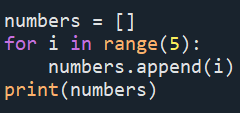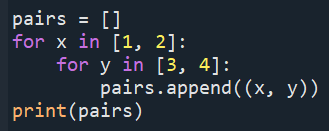1. 什麼是「列表推導式」?
在 Python 裡,常常需要「用迴圈」產生一個新列表:
結果會輸出
但其實可以用一行寫完:
輸出的結果是一樣的
這種寫法就叫做 「列表推導式」,它的基本語法是:[運算式 for 變數 in 可迭代物件]
運算式 : 要放入列表的內容(可以是運算、函式、字串等)
for 變數 in 可迭代物件 : 就像一般的 for 迴圈,用來逐一取出資料
2. 加上條件判斷
也可以在裡面加上 if 條件,例如:
結果會輸出
3. 運算也能放進去
結果會輸出
4. 巢狀迴圈也能一行寫!
傳統寫法:
結果會輸出
如果用推導式寫:
5. 文字處理應用
結果會輸出
6. 小練習
結果會輸出
其實等同於前面學過的寫法:
